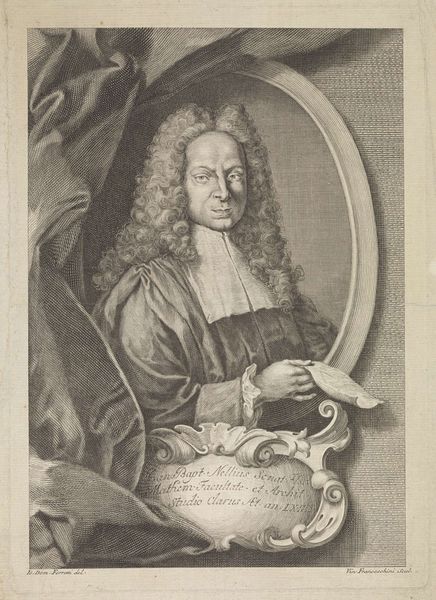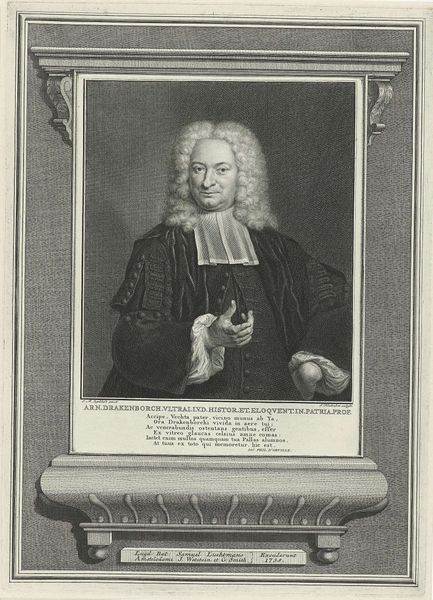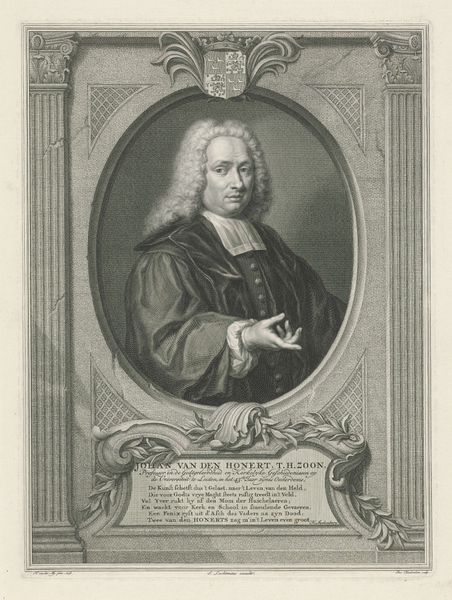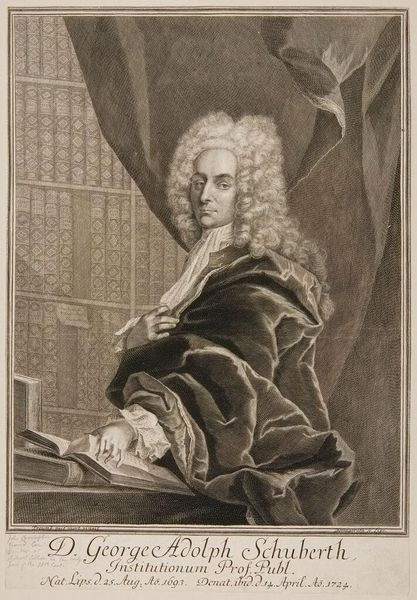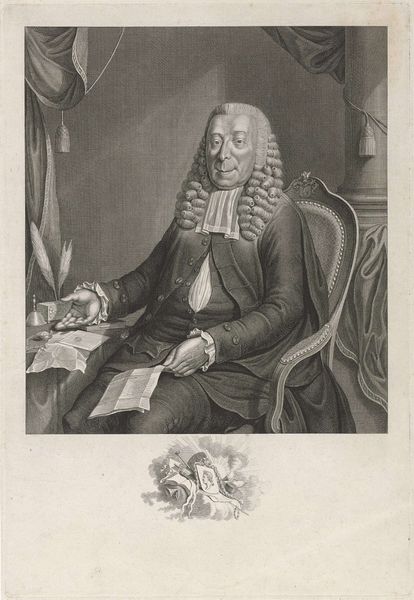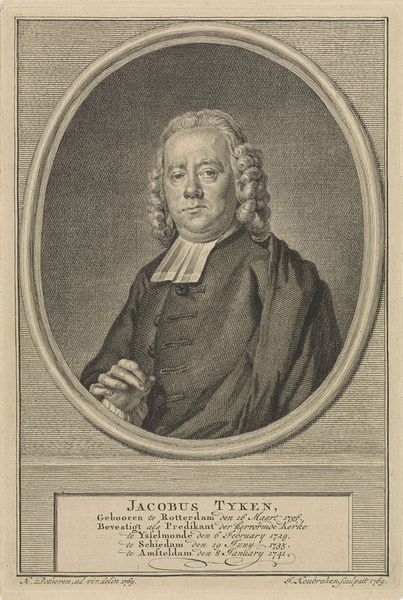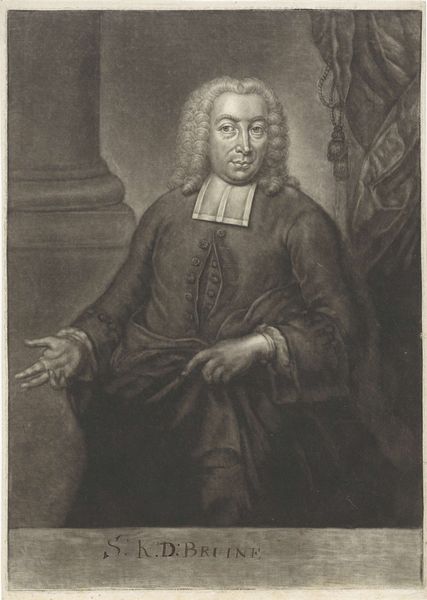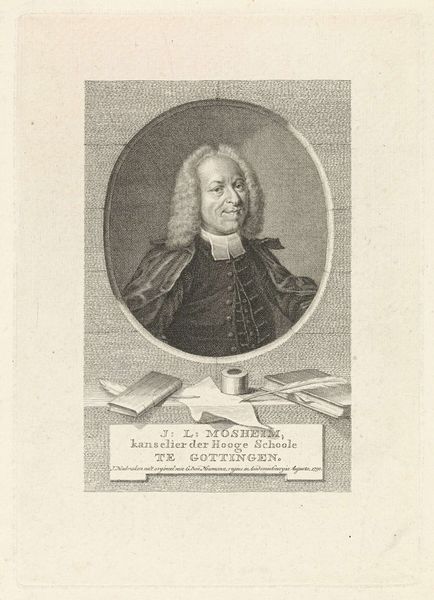
drawing, engraving
#
portrait
#
drawing
#
baroque
#
historical photography
#
history-painting
#
engraving
Dimensions: height 480 mm, width 341 mm
Copyright: Rijks Museum: Open Domain
Jacob Houbraken made this portrait of Gottfried Bentzmann using engraving, a printmaking technique with a rich history of its own. Consider the labor involved: the artist meticulously incising lines into a metal plate, using a tool called a burin to physically remove slivers of metal. This process required immense skill and patience. The depth and density of these lines, in turn, dictate the tones and textures of the final print. Look closely, and you can appreciate the tonal variation Houbraken achieved; the heavy blacks of Bentzmann's coat, the soft rendering of his powdered wig. The social context is also important. Printmaking, unlike painting, allowed for relatively easy reproduction and dissemination of images. This portrait, therefore, was not just about capturing the likeness of an individual, but about circulating an image of status and accomplishment, ideas of class and labor in 18th century society. By understanding the material process of engraving, we can appreciate not only the artistry, but also the social and cultural significance embedded within the artwork.
Comments
No comments
Be the first to comment and join the conversation on the ultimate creative platform.



